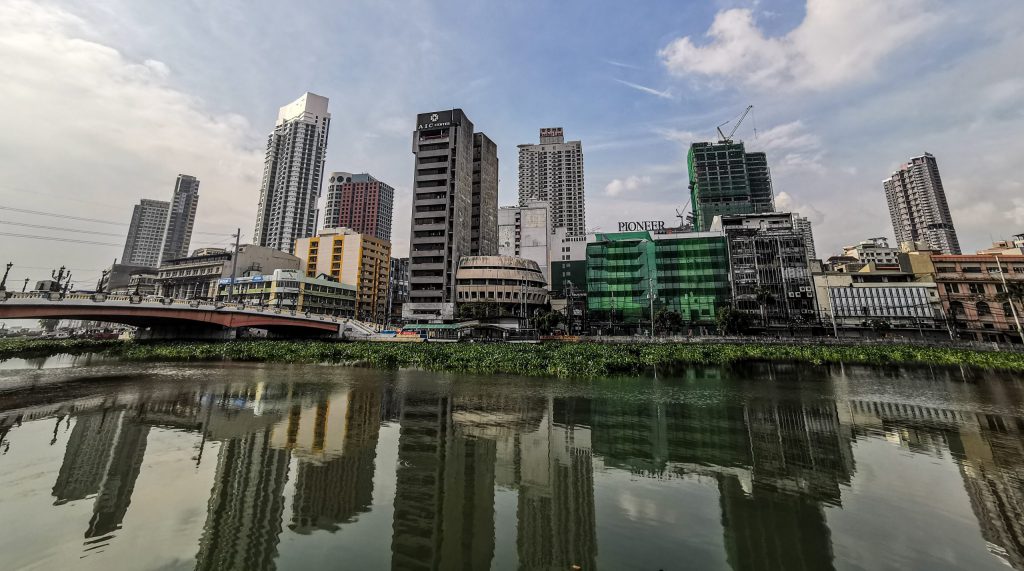The NEXCITIES Project Blog
Insights into waste, water, energy, and the cities of the future
Sewage and the City
P. Labitoria
“Where does all this wastewater go?” says a phantom inside my head when I used to live in the 3rd story of a building in Metro Manila. The question haunts my everyday life and when I want to stress myself more I would ask, “where does the wastewater of 10 million people go everyday?” while I look at the expanse of buildings around me.
I would imagine sludge going through pipes, going through rivers and into Manila Bay. I would imagine people living near the Bay having to put up with all the megacities’ waste- including their own domestic dirty water. Does anybody think about things like this- at breakfast?
Metro Manila does not have enough sewage treatment plants for all its inhabitants. And I wasn’t wrong – Metro Manila has 15 million people.

According to a news report, the city has only met 14 percent of its required number of sewerage treatment plants. Septic tanks are the second option but not all are emptied every 5 years and the overflowing containers spill over to the esteros; others who cannot afford to have a septic tank have their waste go directly to whatever flowing water body is nearby.
When it comes to the whole country, only 10% of Filipinos are connected to a sewerage system, a DENR report says.
What does it mean for us to have poor sanitation?
A report from Rappler citing DENR says “55 people die daily from diseases caused by a lack of proper sewerage and sanitation facilities. These include leptospirosis, malaria, dengue, Hepatitis A, Hepatitis E, and Typhoid fever.”
With diseases comes economic burden not only for the people affected but to the government who is also responsible for citizen’s welfare. UNICEF-WHO enumerates these costs as the following:
- payments and travel costs for households seeking healthcare;
- government subsidies implicit in public health care provision;
- income losses associated with sickness;
- lost productivity due to time spent seeking a place for open defecation;
- and coping costs resulting from environmental and water resource pollution
Social Impacts
Another implication that is harder to quantify than economic losses are the social impacts to those who are affected as reported by UNICEF-WHO. The report classified these as impacts on:
- Dignity – The ability to manage bodily functions, including urination, defecation and menstruation, is at the core of dignity;
- Poverty – The poor are the last to benefit from public investment and they are the ones who are the receiver of the pollution;
- Disability – People with disability especially those experiencing poverty at the same time have more difficulty accessing sanitation services;
- Safety – Poor access to sanitation services can expose vulnerable groups – particularly women and girls – to sexual, psychological and physical violence.
- Gender – Poor sanitation increases health risks that are specific to women;
- Education – education of those who become sick due to unsanitary conditions are affected as well as those of school-age girls who have started menstruating.
With economic losses, and social impacts, our bad sewerage system also degrades our environment. Oceans, rivers, and lakes become depositories of wastes; ground water becomes polluted and we lose areas of natural beauty to septic views.
As population continually expands, especially in Metro Manila, solving the sewage problem becomes even more urgent. Still citing the study of UNICEF-WHO, “investing in sanitation had a greater benefit-cost ratio than investing in water supply.” And today, with the threat of the Covid-19 pandemic and its variants- a clean, healthy city becomes even more important.
Does anybody think about things like this- at breakfast? I think we have to because with our sanitation problems- everyone loses.
Sources:
[1] Metro sewerage problem 10 times worse than Boracay’s – MWSS. https://news.abs-cbn.com/news/03/21/18/metro-sewerage-problem-10-times-worse-than-boracays-mwss
[2] 55 die daily in PH from lack of proper sewerage. https://www.rappler.com/nation/sewage-problem-denr
[3] Water and sanitation. https://www.washdata.org/sites/default/files/2020-11/UNICEF-WHO-state-of-the-worlds-sanitation-2020.pdf
[4] Manila—the world’s most densely-populated city—reimagined by Harvard. https://lifestyle.inquirer.net/308785/manila-worlds-densely-populated-city-reimagined-harvard/
[5] Featured Photo by Yogendra Singh from Pexels

Converting wastewater into nutrient-rich fertilizer for a better city of the future
